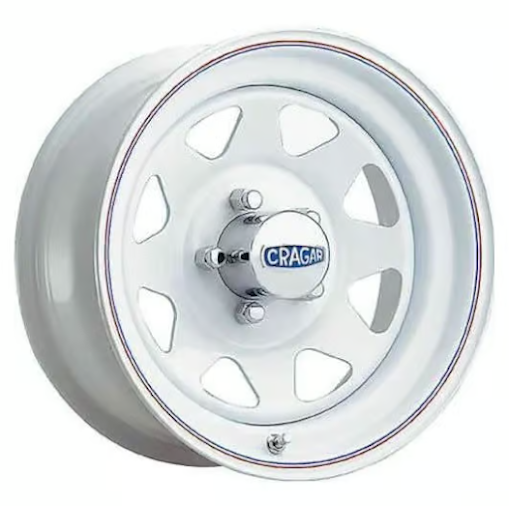Notifications

7 minutes, 8 seconds
-9 Views 0 Comments 0 Likes 0 Reviews

Selecting the perfect wheels for a classic or muscle car is more than just a matter of style—it's a decision that influences performance, handling, and authenticity. Whether you're restoring a vintage vehicle to factory specifications or building a street-ready restomod, the wheels you choose can define the car’s look and feel. With so many options available today, from vintage-inspired replicas to high-performance modern wheels, understanding what to look for is essential. This guide walks you through the most important factors to consider when choosing wheels for your classic or muscle car.
Know Your Car’s History and Style
Before diving into sizes and materials, it's crucial to understand your car's design heritage. Classic cars and muscle classic car wheels eras featured specific wheel styles that complemented their overall look. A 1967 Mustang, for example, would traditionally wear Magnum 500 wheels, while a ‘70s Pontiac GTO might sport Rally II wheels. Staying true to the original design ensures that your car retains its visual identity and historical charm. Even if you're not aiming for a factory-correct build, knowing what was originally used can guide your decision in selecting a tasteful upgrade.
Balancing Authenticity with Modern Needs
Original wheels look great, but they weren’t designed for the demands of modern driving. Older wheels often can’t accommodate today’s high-performance tires or upgraded disc brakes. This is where period-correct replica wheels come in. These wheels capture the look of the original design but are built with stronger, lighter materials and in modern sizes. They’re perfect for restorers who want a factory look without sacrificing the improvements that come with newer technology, such as better handling, braking, and ride quality.
Choosing the Right Wheel Size and Fitment
Size is more than just aesthetics—it affects ride quality, handling, and even tire availability. Classic cars originally came with smaller wheels (usually 14 or 15 inches), but today's wider, low-profile tires often require wheels in the 17–20 inch range. When upsizing, it's important to ensure that the new wheels clear suspension and brake components while maintaining proper alignment and offset. A staggered setup, with wider rear wheels for traction, is also a popular choice for muscle cars. However, too much deviation from factory specs can result in rubbing, poor handling, or unsafe driving.
Understanding Wheel Materials and Construction
Wheels come in a range of materials, each offering unique benefits. Steel wheels are durable and affordable but are heavier and can rust over time. Aluminum alloys are much lighter, which helps improve acceleration, braking, and fuel efficiency. For high-performance applications, forged aluminum wheels offer maximum strength with minimal weight. Choosing the right material depends on how you plan to use the car—whether for show, cruising, or spirited driving—and how much emphasis you place on performance versus originality.
Wheel Finish: Matching Looks with Longevity
The finish on your wheels plays a huge role in both appearance and maintenance. Chrome wheels offer a bright, classic look but require frequent upkeep to avoid pitting or corrosion. Painted finishes, especially in black, silver, or body-matching tones, are versatile and popular among custom builders. Polished aluminum provides a timeless shine without the full mirror-like intensity of chrome. Powder coating is another option for those seeking durability and a custom color. Ultimately, your finish should align with the overall look you're going for and how much effort you're willing to put into maintenance.
Performance Considerations for Driving Enthusiasts
If your classic or muscle car is more than just a garage queen—say, it sees track days or aggressive street driving—performance should be a top priority. Wider wheels and performance tires can dramatically increase traction and cornering ability. Lightweight wheels reduce unsprung weight, improving responsiveness. For high-torque vehicles, especially drag racers, beadlock wheels or reinforced rims may be necessary to prevent tire slippage under acceleration. Always pair your wheels with tires that are rated appropriately for your car's speed and load capabilities.
Making a Smart Investment in the Long Run
Choosing the right wheels isn’t just about how they look today—it’s about making a smart investment in your car’s future. Well-chosen wheels can enhance resale value, improve drivability, and even help with long-term preservation if they’re corrosion-resistant and properly maintained. It’s worth spending time researching your options and even consulting with professionals who specialize in classic and muscle car builds. A carefully selected set of wheels can take your vehicle from good to unforgettable.
Conclusion: Rolling in Style with Confidence
Wheels are one of the most defining and personal touches you can add to your classic or muscle car. By considering the balance between vintage style and modern functionality, you can find wheels that enhance performance, boost curb appeal, and stay true to your car’s identity. Whether you’re aiming for an exact replica of the past or a custom expression of your vision, choosing the right wheels will ensure your ride turns heads for all the right reasons.

